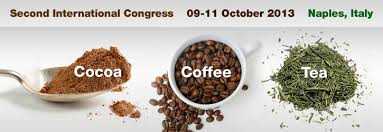Mesías M., Morales F.J.Institute of Food Science, Technology and Nutrition (ICTAN), Spanish National Research Council (CSIC), Madrid, Spain. E-mail: mmesias@ictan.csic.es Worldwide Food Safety Agencies have classified furan as carcinogenic and cytotoxic compound due to its effects in animal studies, and it has been associated with harmful effects to human health. Due to this fact, technological strategies are being developed in order to prevent or mitigate furan formation in foods and, moreover, to remove the already formed furan from the food product [1].
It has been estimated that coffee consumption may be the highest contributor to furan exposure from dietary sources for adults. This study is aimed to discuss the mitigation approaches to furan up today and, therefore, their impact in furan levels of exposure to humans. A case study to probe the concept was designed with coffee brew acquired from automatic vending machines.
Different scenarios were settled immediately after the acquisition of coffee brew, being (a) standing at room temperature for 5 minutes simulating the coffee brew, (b) stirring for 30 seconds (simulating the sugar or milk mixture) and standing at room temperature until 5 minutes, (c) stirring up to 5 minutes, (d) maintenance in a sealed thermo during 8 hours, for coffees consumed during the workday, and (e) maintenance in a sealed container at a fridge during one week, for coffees consumed at home.
Temperatures were registered in each assay. Aliquots were taken every 30 seconds simulating consumption (trials a, b and c), every hour (trial d), and every day (trial e). Furan levels were determined by HS-GC-MS according to the US FDA method.
Furan content in coffee decreased ~74% after standing at room temperature for 5 minutes, ~64% after stirring for 30 seconds and standing at room temperature up to 5 minutes, ~94% after stirring for 5 minutes, ~97% after 8 hours in a sealed thermo and ~37% after being cooled one week at a fridge.
Furan content from coffee brew decreased from 170 up to 4 ng/mL after simulating the behavior of coffee consumption.
These results suggest that a reevaluation of exposure data is necessary, since found results are much lower than 2 μg/kg bw/day (140 μg/day for an adult of 70 kg) estimated as the acceptable daily intake of furan [2].
References
[1] Anese, M. et al. Mitigation strategies of furan and 5-hydroxymethylfurfural in food. Food Res. Int. 2013, 51, 257–264. [2] Kuballa, T. et al. Furan in kaffee und kaffeegetränken. Deut. Lebensm-Rundschau 2005, 101, 229–235.
Acknowledgements:
This research was partly supported by the grants AGR1464-ANALISYC-II (CAM) and EU-FP7-265558 PROMETHEUS project.


















